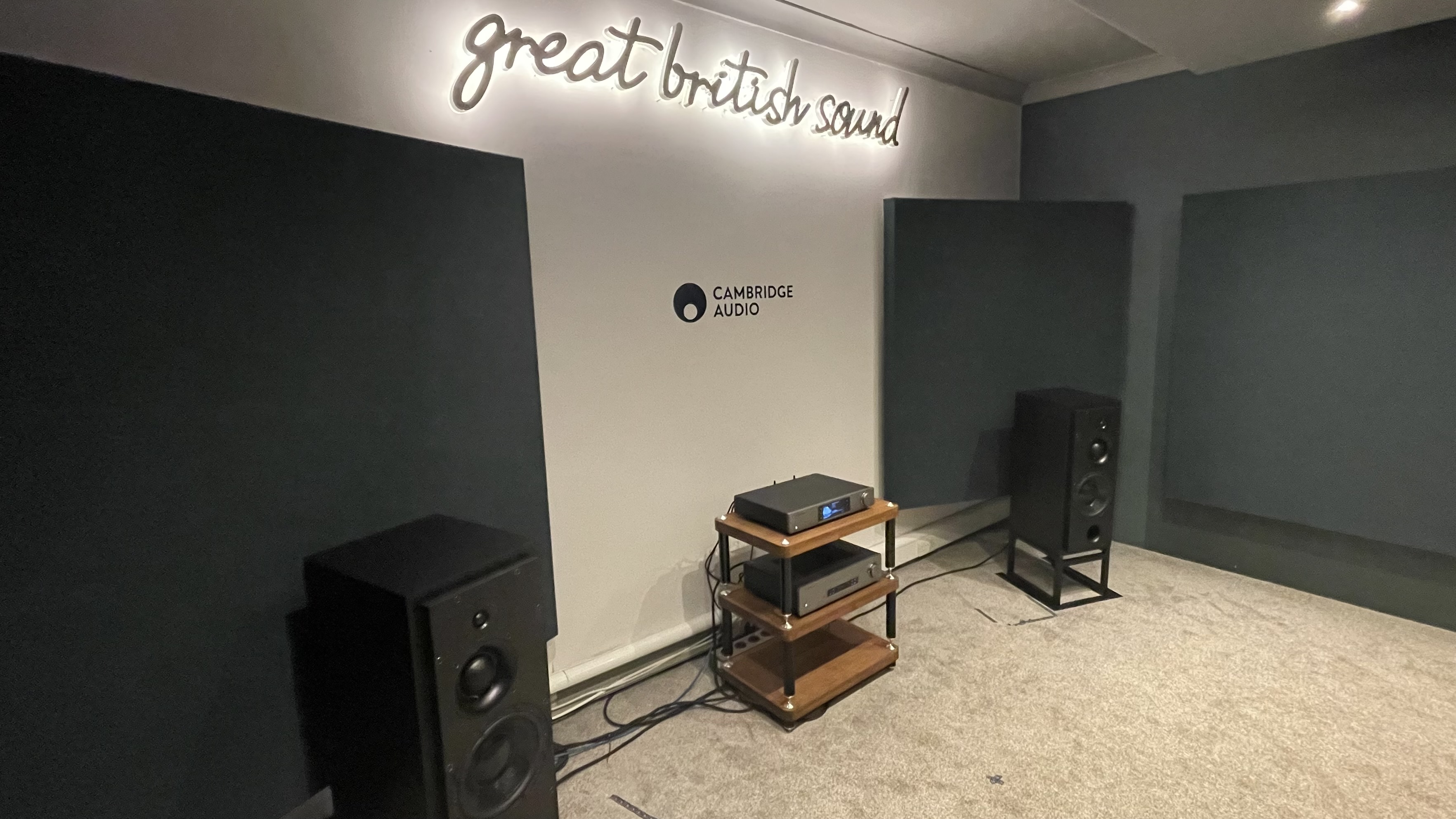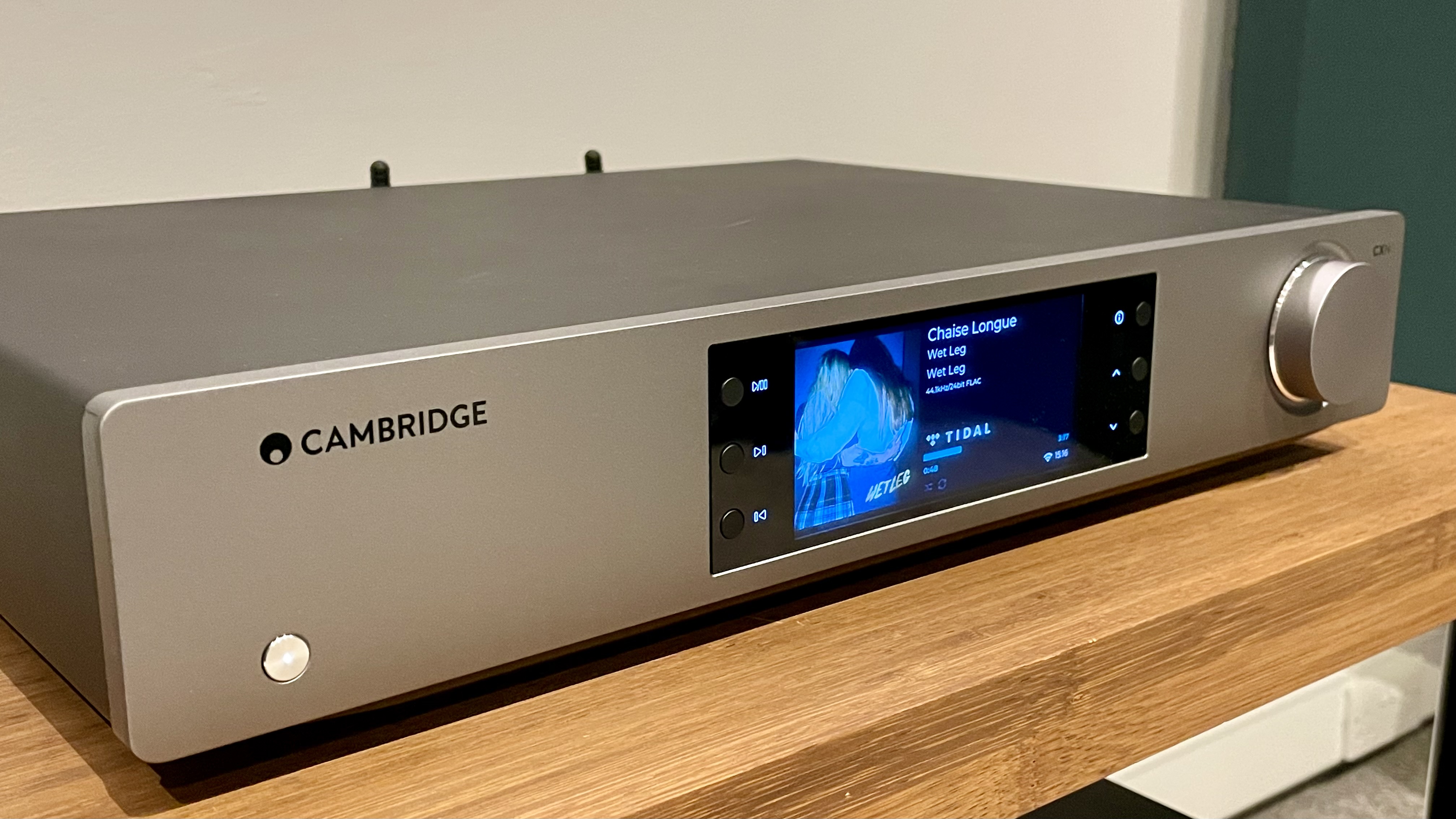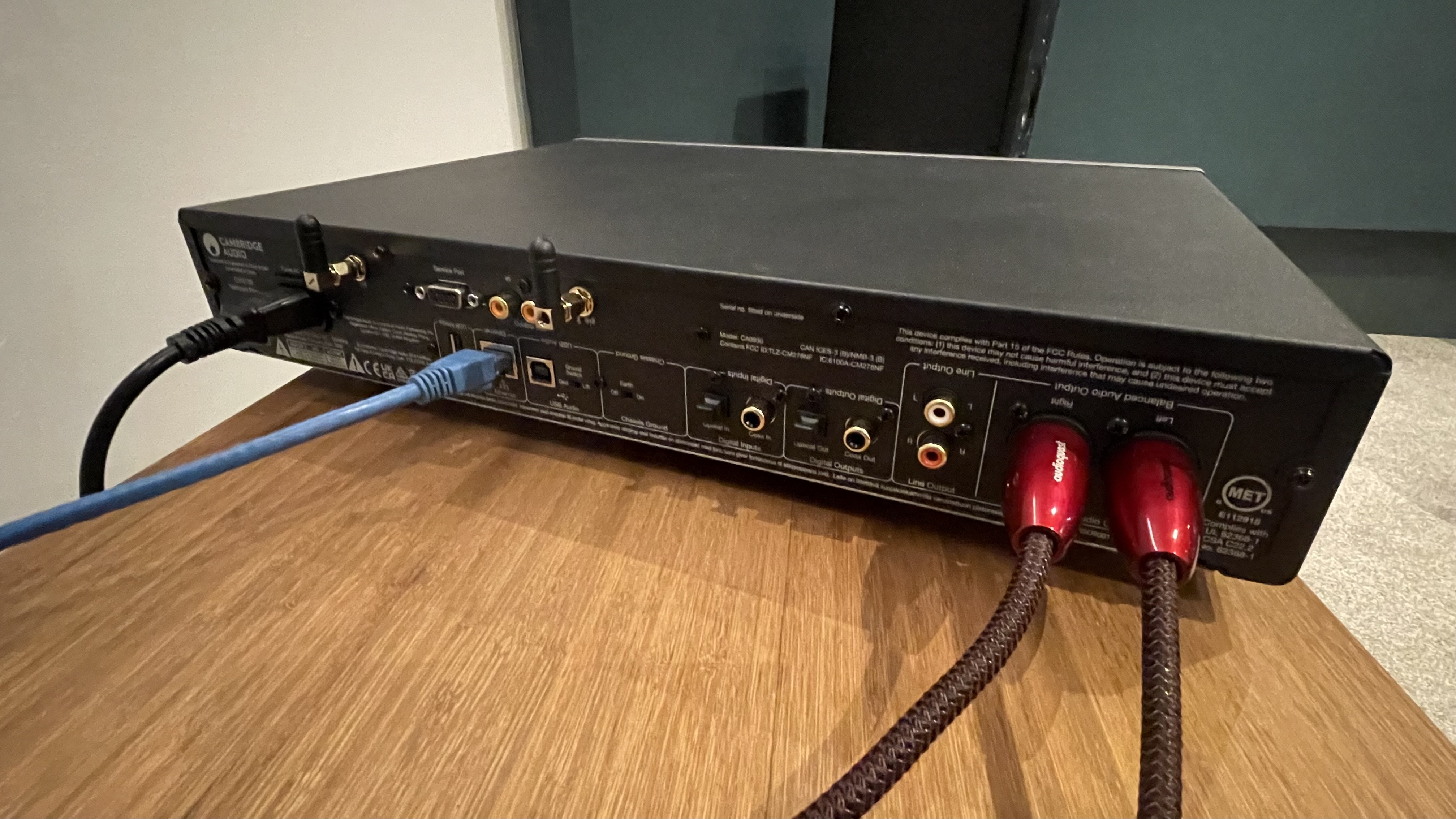Hearing Cambridge Audio's new network player reignited my love of stereo speakers
Cambridge Audio CXN100, amp, floorstanders: hi-fi heaven

In an age of globular, fabric-swaddled smart speakers, Bluetooth boxes and multi-room audio systems ready to set up an invisible mesh in your home (to command drivers subtly squirrelled away in your walls and ceiling), a set of passive stereo floorstanders towed in and physically hooked up to a stack on a rack, topped by the new Cambridge Audio CXN100 network player, might seem a bit much.
Not when it's done to Cambridge Audio's exacting standards though. Having just heard the new network player at the British firm's Melomania HQ in London, I now know for certain that a more traditional hi-fi approach leading to a set of floorstanders – albeit one capable of hi-res streaming of digital music files – is best.
That is what you get with the Cambridge Audio CXN100. Building on the success of its award-winning predecessor, the CXN V2, (and who could forget the 2021 Evo?) the CXN100 isn’t just a remake but a completely rebuilt, supercharged streamer benefiting from cutting-edge components and Cambridge Audio's latest Gen 4 StreamMagic module.

Engineer Charlie Crossley tells us this specific DAC module (the ESS ES9028Q2M SABRE32 Reference DAC), was chosen after "literally hundreds of hours" listening to WAV files and occasionally Qobuz hi-res stuff, to keep the sound here "characteristic – classically Cambridge".
Someone in the room asks if there are any DSP filters or EQ profiles this time around? Nope. At Cambridge Audio, music is the master (the definition of Melomania, the name of this venue, means "crazy about music") and CA's engineers have actively chosen to offer "as few opportunities as possible to muck around with your music – we like a clean sound". Here here.
I applaud the young – and clearly brilliant – Mr. Crossley (this isn't a running commentary of my actions, but I did actually clap my hands several times). The CXN100 network player can support a resolution of up to 32bit/768kHz and full MQA decoding, but if you do have Wi-Fi speakers in the walls and want to go wireless, it is Roon Ready, there's Spotify Connect, TIDAL Connect, Qobuz , and Deezer built-in, Chromecast and AirPlay 2 also baked in, or you can use UPnP, or even Bluetooth (AAC standard and SBC). You also get flexible digital connectivity through USB, Coaxial or TOSLINK.
Music is the master – and I applaud Cambridge Audio's brilliant young engineer

So what's new? There's a 5-inch high-resolution color display to show you album artwork, a 100-step smooth-as-butter volume dial (I tried it), fewer buttons on the unit and no bundled remote – you can still order one, but the companion app does the heavy lifting these days, and Cambridge Audio isn't alone in doing this to help the planet. Also, the USB port has gone from the front of the unit but is still there on the back, which is sensible (let's face it, chucking a USB stick into your player to listen isn't as popular as it once was).
Of course, there are various ways this network player can be partnered – Cambridge Audio toyed with over 15 different configurations for the back of the unit alone. Suffice to say it'll play nice with all the best stereo speakers – whether active, powered, or passive; wired or wireless – but used as a preamp (in preamp mode), the upgrade is volume control without needing a power amp with volume attenuation. And we're about to hear what it can do.
Crossley kicks off our listening session by telling us that one of the "harsh production tracks" he uses for fine-tuning at Cambridge Audio (something you can listen to at length, but it'll give the system a challenge) is the rather Marmite Spiralling by Keane. We hear it. Love or loathe the production of the track, the clarity of Tom Chaplin's vocal piercing through what he has called the "outrageous groove" of the record (including that 'woo!' inspired by wrestling legend Ric Flair) is knife-edge exacting.
Get daily insight, inspiration and deals in your inbox
Sign up for breaking news, reviews, opinion, top tech deals, and more.

We switch to At Last I Am Free by Robert Wyatt, where keys are three-dimensional and Wyatt's inimitable vocal comes centrally but soaring through the treble. I'm sitting in the ideal listening spot, with two floorstanding speakers towed in to meet my ears. It's almost as if Cambridge Audio is telling me, "Come on, you know speakers and systems should be like this really – separate kit for separate jobs, Scarrott", and when it sounds this good, it's impossible to argue.
A lot of love, perfectionism, relentless attention to detail, and countless hours of listening (in the very room I'm in) have gone into this player. And the highest praise I can bestow upon the Cambridge Audio CXN100 during my short time with it is that I can hear that – it is sonically faultless no matter what file type we throw at it.
Yes, you can have a complete music system in a box with little speakers evenly distributed around it – and you can get omnidirectional sound that is both sociable and pleasing. But I urge you to remind yourself what listening in true stereo sounds like with a decent stack powering things.
The Cambridge Audio CXN100 is available in lunar gray (and that's the only option) from today (Feb 2) at cambridgeaudio.com and authorised retailers, priced at $1,099 / £899 / €1,049 (which is around AU$1,665, although official pricing for this region is not yet known).
For me, that fee doesn't seem so bad. Not when you consider that Sonus Faber's formidable Suprema speaker system exists…
You may also like
- See our Cambridge Audio Alva TT V2 review
- Looking for an 8K receiver? Check out the new Denon AVC-X6800H
- Not sure it's the one? See our pick of the best AV receivers

Becky became Audio Editor at TechRadar in 2024, but joined the team in 2022 as Senior Staff Writer, focusing on all things hi-fi. Before this, she spent three years at What Hi-Fi? testing and reviewing everything from wallet-friendly wireless earbuds to huge high-end sound systems. Prior to gaining her MA in Journalism in 2018, Becky freelanced as an arts critic alongside a 22-year career as a professional dancer and aerialist – any love of dance starts with a love of music. Becky has previously contributed to Stuff, FourFourTwo and The Stage. When not writing, she can still be found throwing shapes in a dance studio, these days with varying degrees of success.